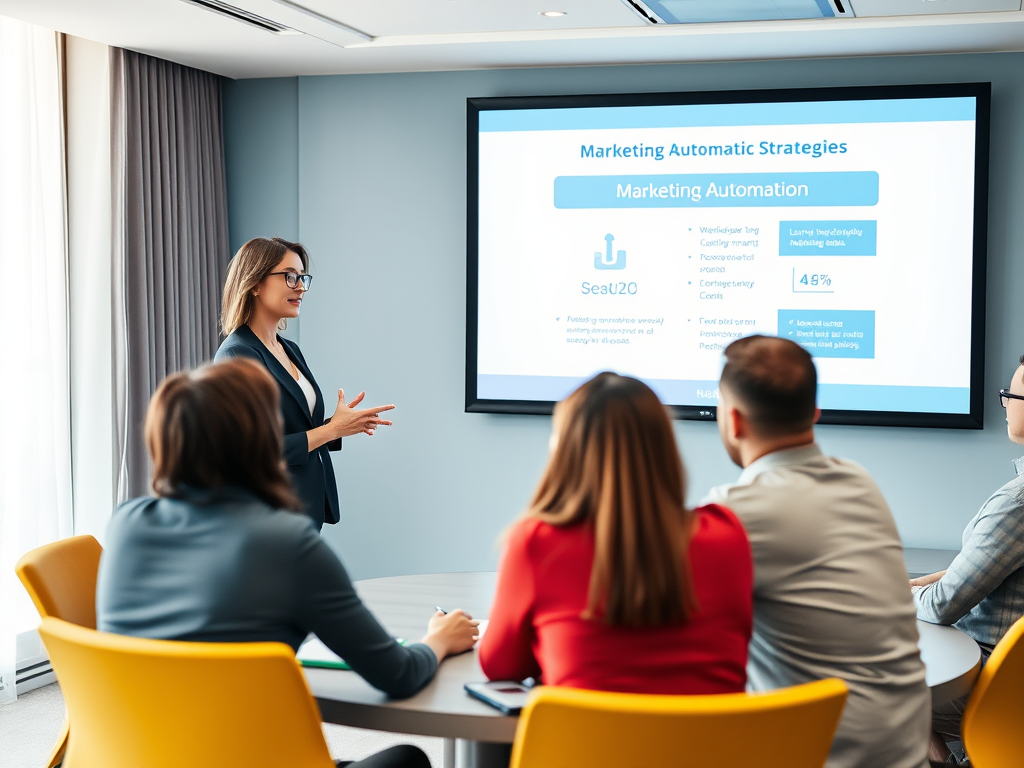In an era where consumer preferences shift with every click, understanding how to seamlessly navigate the marketing landscape is paramount. Marketing automation goes beyond mere efficiency; it transforms how businesses connect with their audiences, amplifying personalization and targeting to unprecedented levels. As the digital marketplace becomes more crowded, leveraging automation can offer a significant competitive edge, enabling marketers to execute campaigns that not only resonate but also drive measurable results. The marketing automation process is a structured approach designed to optimize these efforts. By dissecting the various stages involved, businesses can craft strategies that align with their unique goals and customer journeys. Equipping yourself with this knowledge is the first step towards navigating the complexities of modern marketing.
Key Benefits of Marketing Automation

One of the most compelling reasons to incorporate marketing automation into your strategy is the myriad benefits it offers. With automation, businesses can streamline processes, improve customer engagement, and ultimately achieve higher returns on investment. Let’s delve into some of the key advantages that marketing automation brings to the table:
- Increased Efficiency: Automation allows for the reduction of time spent on repetitive tasks such as sending emails and managing social media posts. This shift lets marketing teams concentrate on strategy and creativity.
- Enhanced Targeting and Personalization: By utilizing data-driven insights, businesses can tailor their campaigns to meet the unique needs of their audience effectively.
- Improved Lead Management: Automated tools help track leads throughout their journey, increasing the likelihood of conversion by nurturing and scoring them based on engagement.
The Marketing Automation Process

The marketing automation process involves multiple stages, each designed to strategically address different facets of audience engagement. Understanding this workflow is crucial for maximizing the impact of your automation efforts. The following steps outline the core components of the marketing automation journey, allowing you to build a robust framework for your campaigns:
Step 1: Define Your Goals
Your automation strategy should start with well-defined objectives. It’s essential to consider what you want to achieve—whether it’s generating leads, increasing sales, or enhancing customer satisfaction. Clear goals provide direction, allowing you to measure success accurately. Determine the key performance indicators (KPIs) that will help gauge the effectiveness of your campaigns. Not only do specific goals streamline your efforts, but they also facilitate better decision-making throughout the process.
Step 2: Choose the Right Tools
Selecting the appropriate marketing automation tools can significantly influence your success. Various platforms offer different features, and understanding which tool fits your needs is essential. Factors to consider when choosing automation software include:
- Scalability for future growth.
- User-friendliness for diverse team members.
- Integration capabilities with existing systems.
- Customer support and community resources.
Step 3: Map Out Your Customer Journey
Understanding the entire customer journey is critical to tailoring marketing strategies effectively. Mapping this journey allows businesses to identify key touchpoints where automation can significantly enhance the customer experience. Consider the various stages a potential customer may go through, from awareness to advocacy. This understanding creates opportunities for strategic content development that resonates at each stage. When executed properly, mapping the customer journey leads to higher engagement and conversion rates.
| Customer Journey Stage | Key Activities | Potential Automation Tools |
|---|---|---|
| Aware | Content marketing, social media engagement | HubSpot, Marketo |
| Consideration | Email marketing, lead nurturing | Mailchimp, ActiveCampaign |
| Decision | Sales team follow-ups, personalized offers | Salesforce, Pipedrive |
Conclusion
In conclusion, mastering the marketing automation process is essential for modern businesses aiming to succeed in a competitive landscape. By understanding the various steps, from defining clear goals to selecting the right tools and mapping out the customer journey, organizations can greatly enhance their marketing efforts. The benefits are substantial; from improved efficiency and enhanced targeting to better lead management, marketing automation offers a pathway to transformative growth. As industries evolve, so too must our approach to reaching customers effectively and efficiently.
Frequently Asked Questions
- What is marketing automation? Marketing automation refers to software platforms and technologies designed for marketing departments to streamline, automate, and measure marketing tasks and workflows.
- What are the common tools used in marketing automation? Some common tools include HubSpot, Marketo, Mailchimp, and Salesforce.
- How can marketing automation enhance customer engagement? Automation enables personalized communication based on user behavior and preferences, leading to higher engagement rates.
- Is marketing automation only for large businesses? No, businesses of all sizes can benefit from marketing automation by improving efficiency and effectiveness in their marketing efforts.
- How long does it take to see results from marketing automation? Results can vary, but many businesses start to see beneficial outcomes within a few months of implementation, depending on their strategies and goals.




